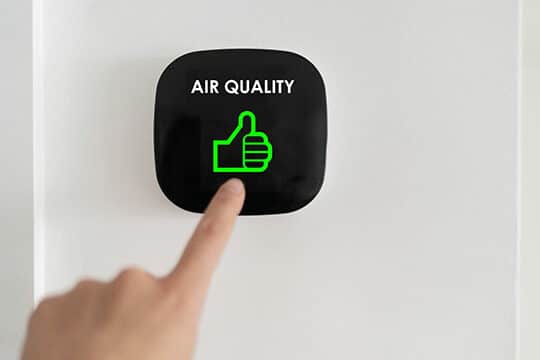Comfort Ventilation and Energy Efficiency
While comfort ventilation alone benefits indoor air quality, the inclusion of energy recovery takes it a step further. It ensures that the ventilation process is efficient in terms of air exchange and energy consumption.

Energy Recovery in Comfort Ventilation Systems
Ever get that sleepy feeling in a meeting, office, or classroom where you can’t concentrate? It is likely the build-up of carbon dioxide and pollutants due to poor ventilation. Many studies show that better ventilation can help concentration, productivity, and performance.
Good ventilation is not just about opening windows or installing fans. It’s about using technology effectively to create a sustainable and low-carbon environment. By balancing air quality, energy use, and comfort, we can ensure our buildings are well-ventilated and environmentally friendly.
Comfort ventilation works by exchanging indoor air with fresh outdoor air. The incoming air is filtered, removing particles and pollutants, ensuring a cleaner and healthier living environment. By removing excess moisture, comfort ventilation systems help prevent mold and mildew growth, which can harm both our health and the integrity of our homes or offices.
Energy recovery systems can significantly reduce energy costs by recovering the energy from the outgoing air. This is especially important in climates with extreme temperatures, where heating or cooling accounts for a significant portion of energy consumption.
Comfort ventilation with energy recovery allows you to enjoy a more sustainable and greener lifestyle while saving money on energy bills.
Energy recovery systems utilize various technologies to transfer energy from the outgoing air to the incoming fresh air. Air-to-air heat exchangers are standard components in AHUs for comfort ventilation. The heat exchanger transfers heat from the warm air leaving the building to the cooler air entering, ensuring the incoming air is pre-conditioned to a more desirable temperature.
There are two types of exchangers: rotor and plate heat exchangers. Plate heat exchangers are perfect for closed-loop systems where you do not want the incoming and outgoing airflows to mix. Rotors can transfer humidity (Enthalpy) and are particularly useful in climates with high humidity levels, where maintaining a comfortable indoor environment can be challenging.
If you want to know more about indoor air quality, we recommend visiting the Indoor Air Hygiene Institute. It’s the only organization dedicated solely to indoor air quality and its certification. The Institute aims to improve human health and productivity within indoor spaces through excellence in indoor air ventilation, filtration, and purification standards.
High Efficiency Products
Certified performance for maximizing energy and heat recovery with a fast return on investment.
Technical Expertise
We have extensive technical knowledge and customized solutions for your unique needs.
Extensive Capabilities
With production facilities in Europe, the US and China we are always close and accessible.
